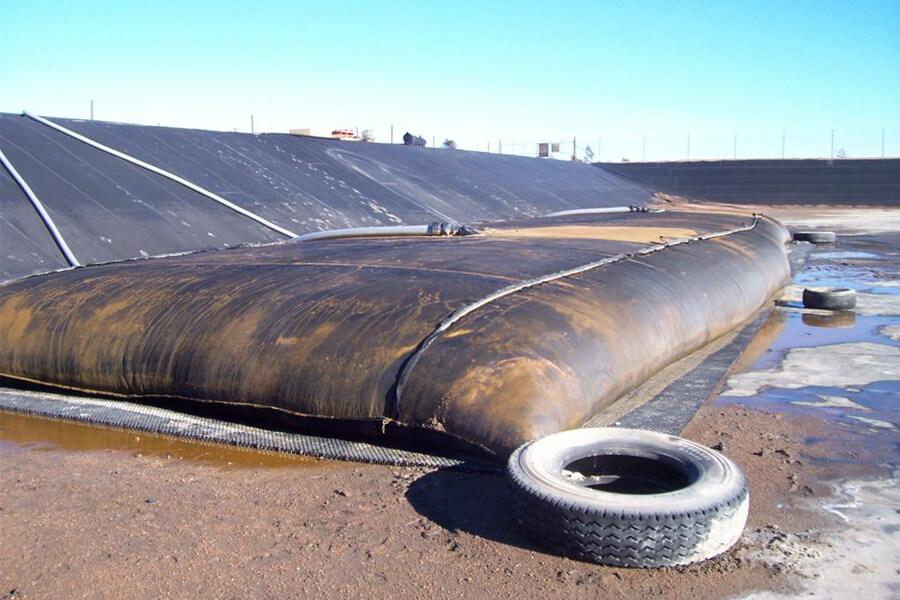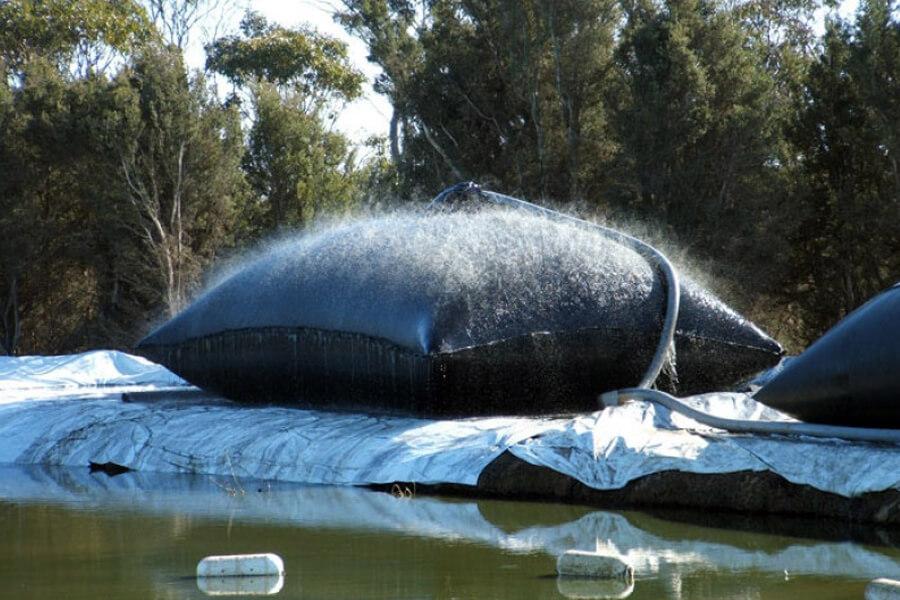ProTube® DEWATERING TUBE
The use of geotextiles fabricated into large bags or tubes for the containment of materials (generally sand) to form engineering structures in marine environments was largely developed in the USA in the late 1980’s. The technology has developed such that these systems are a well accepted engineering methodology that provides a unique and cost effective solution to engineering problems in a marine environment.
Dewatering tubes provide a cost effective way to collect harmful sediments from contaminated water pumped out of excavation works that would otherwise pollute the surrounding environment.
In more recent times the use of such products has been extended to include the effective dewatering of sludge from a range of industrial processes.
The use of such products provides a very innovative, efficient and economical alternative to the dewatering of sludge over more traditional methods.
Product Information
The Global Synthetics dewatering ProTube® is made from a specially constructed geotextile that has excellent tensile strengths and filtration characteristics suitable for the manufacture of dewatering tubes and for the dewatering of a range of sludge materials.
Dewatering of sludge material using the ProTube® product works by:
Containing the fine grained sludge material within the unique weave of the Global Synthetics ProTube® geotextile.
Dewatering of the excess water through the specially constructed pores of the Global Synthetics ProTube® geotextile.
There is significant volume reduction of the sludge material which allows for repeated filling of the ProTube® product in many cases. Consolidation occurs after the final cycle of filling and dewatering. The fine grained solids contained within the ProTube® product continue to consolidate through desiccation with residual water vapour continuing to escape through the geotextile pores. This results in the most effective residue state for final disposal of the waste.
How it works?
Sludge is pumped into ProTube® dewatering tubes with or without flocculants depending on the sludge particle sizes. During and after the filling process, the water dissipates through the fabric while the solid particles are retained within the geotextile tubes with low moisture contents. Afterwards, the volume of sludge reduces significantly, and a great deal of removal and disposal works are saved. Moreover, the installation and usage of ProTube are very cost and time effective.
Benefits of ProTube®:
ProTube® allows for effective high volume containment with efficient dewatering and volume reduction. The ProTube® product offers users cost savings in disposal costs and the ability to on-site manage waste generated with no special equipment requirements.
Cost-effective alternate to traditional methods
Minimal environmental impact
Small footprint
Dewater faster
Work with a large variety of sediments, sludge and sand
High-strength, permeable geotextile
Tough, UV resistant
ProTube® dewatering tubes are available in a variety of sizes.


